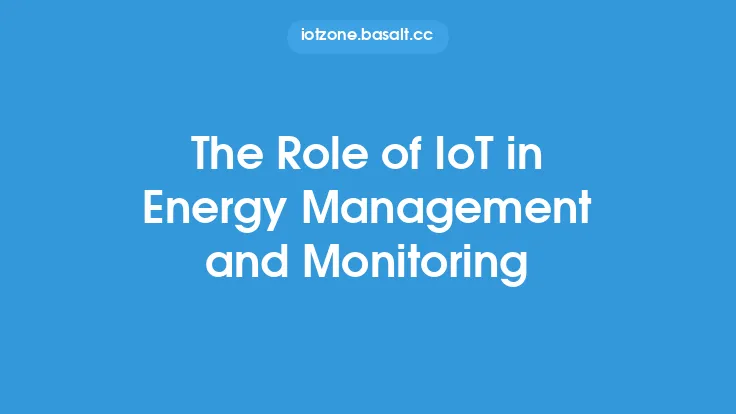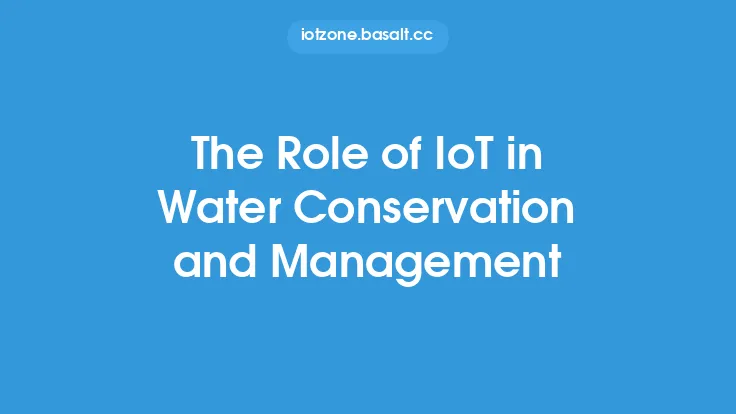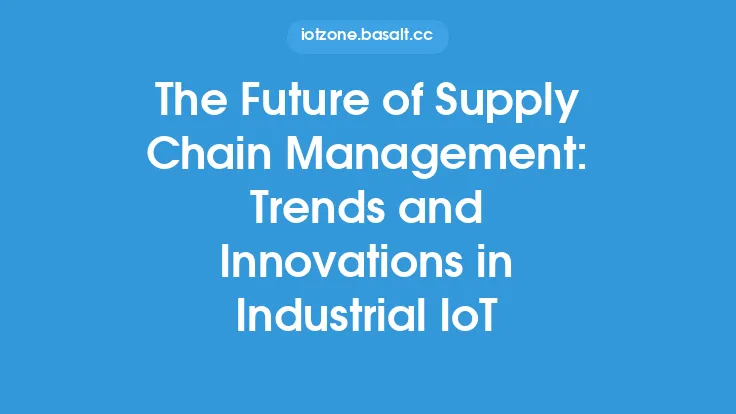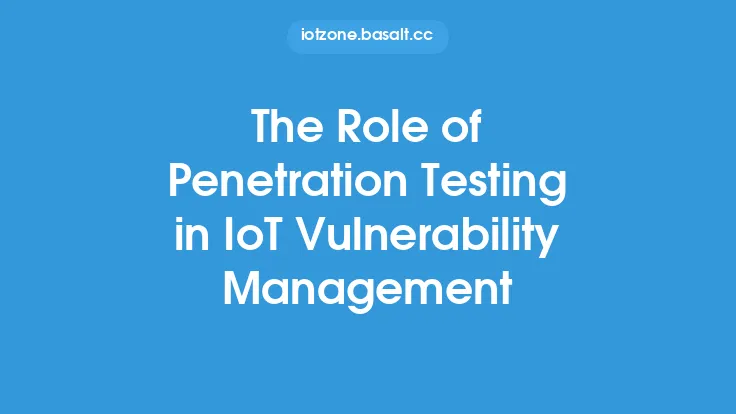The livestock industry is a significant sector in agriculture, providing a substantial source of income and food for millions of people worldwide. However, traditional livestock monitoring and management methods can be time-consuming, labor-intensive, and often ineffective, leading to reduced productivity, increased costs, and decreased animal welfare. The advent of the Internet of Things (IoT) has revolutionized the livestock industry by providing a more efficient, accurate, and cost-effective way to monitor and manage livestock.
Introduction to IoT in Livestock Monitoring
IoT technology has been increasingly adopted in the livestock industry to improve the health, productivity, and welfare of animals. IoT devices, such as sensors, GPS trackers, and RFID tags, can be used to collect data on various aspects of livestock, including their behavior, health, nutrition, and environment. This data can be transmitted to a central platform, where it can be analyzed and used to make informed decisions about livestock management. IoT technology can be applied to various types of livestock, including cattle, pigs, sheep, and poultry.
Benefits of IoT in Livestock Monitoring
The use of IoT in livestock monitoring offers several benefits, including improved animal health, increased productivity, and reduced costs. IoT devices can detect early signs of illness or stress in animals, allowing farmers to take prompt action to prevent the spread of disease. IoT technology can also be used to monitor animal behavior, such as feeding patterns, activity levels, and social interactions, which can help farmers to identify potential issues and make adjustments to improve animal welfare. Additionally, IoT devices can be used to track animal location, movement, and grazing patterns, which can help farmers to optimize pasture management and reduce the risk of overgrazing.
IoT Devices and Sensors Used in Livestock Monitoring
Several types of IoT devices and sensors are used in livestock monitoring, including wearable sensors, environmental sensors, and camera systems. Wearable sensors, such as collars or ear tags, can be used to track animal behavior, health, and location. Environmental sensors, such as temperature and humidity sensors, can be used to monitor the animal's environment and detect potential issues, such as heat stress or poor air quality. Camera systems, such as drones or CCTV cameras, can be used to monitor animal behavior and detect potential issues, such as injury or illness.
Data Analytics and Decision-Making
The data collected from IoT devices and sensors can be analyzed using various data analytics techniques, such as machine learning and predictive analytics. This analysis can help farmers to identify patterns and trends in animal behavior and health, which can be used to make informed decisions about livestock management. For example, data analytics can be used to predict the likelihood of disease outbreaks, identify areas where animal welfare can be improved, and optimize feeding and breeding strategies. The use of data analytics can also help farmers to reduce costs and improve productivity by identifying areas where resources can be optimized.
Challenges and Limitations of IoT in Livestock Monitoring
While IoT technology has the potential to revolutionize the livestock industry, there are several challenges and limitations that need to be addressed. One of the main challenges is the cost of IoT devices and sensors, which can be prohibitively expensive for small-scale farmers. Additionally, the use of IoT technology requires significant infrastructure, including internet connectivity, data storage, and analytics software. There are also concerns about data privacy and security, as well as the potential for IoT devices to be used for malicious purposes, such as theft or vandalism.
Future Developments and Trends
The use of IoT in livestock monitoring is a rapidly evolving field, with several future developments and trends on the horizon. One of the main trends is the increasing use of artificial intelligence (AI) and machine learning (ML) to analyze data and make predictions about animal behavior and health. Another trend is the development of more advanced IoT devices and sensors, such as those that can detect early signs of illness or stress in animals. There is also a growing interest in the use of blockchain technology to improve data security and transparency in the livestock industry.
Best Practices for Implementing IoT in Livestock Monitoring
To get the most out of IoT technology in livestock monitoring, farmers should follow several best practices. First, they should start by identifying their specific needs and goals, such as improving animal health or increasing productivity. Next, they should select the most suitable IoT devices and sensors for their needs, and ensure that they are properly installed and maintained. Farmers should also invest in data analytics software and training, to ensure that they can effectively analyze and interpret the data collected from IoT devices. Finally, farmers should regularly review and update their IoT systems, to ensure that they remain effective and efficient over time.
Conclusion
In conclusion, the use of IoT in livestock monitoring and management has the potential to revolutionize the livestock industry by providing a more efficient, accurate, and cost-effective way to monitor and manage livestock. While there are several challenges and limitations that need to be addressed, the benefits of IoT technology, including improved animal health, increased productivity, and reduced costs, make it an attractive option for farmers. As the technology continues to evolve, we can expect to see more advanced IoT devices and sensors, as well as greater use of AI and ML to analyze data and make predictions about animal behavior and health. By following best practices and staying up-to-date with the latest developments and trends, farmers can get the most out of IoT technology and improve the health, productivity, and welfare of their animals.



